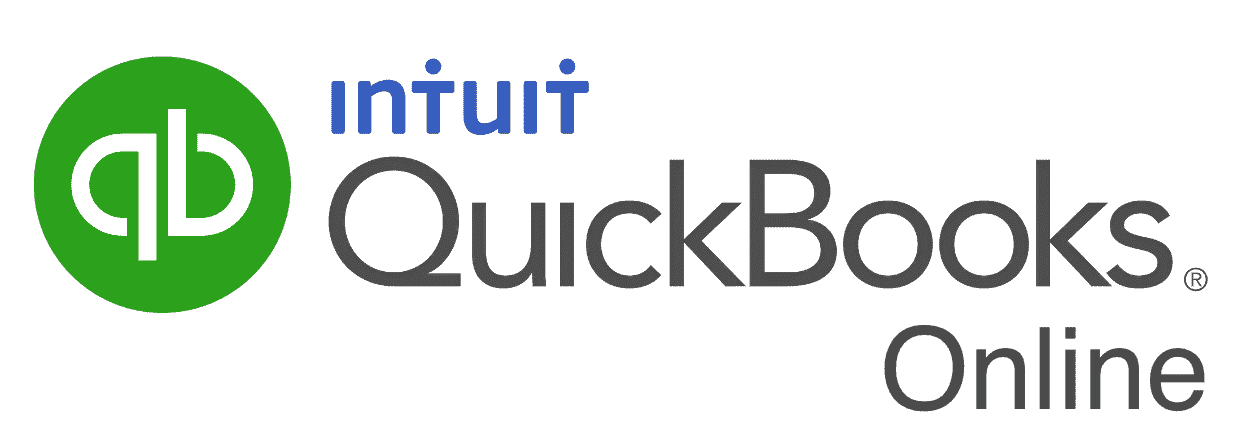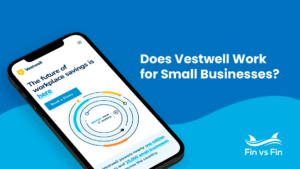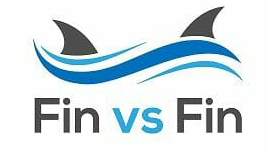As a current customer, I’m excited to review Guideline, a popular small business 401(k) provider that I’ve been using for the last couple years. Founded in 2015, the company is sometimes referred to as “the Gusto 401(k)” because of its robust payroll integration with Gusto, the popular payroll software. But Guideline also plays well Rippling and many other leading providers of small business payroll and HR software. This is important to reduce errors and save the plan administrator a ton of time.
If you’re wondering if Guideline is the right choice for your company’s 401(k) benefit, and curious how it stacks up to alternatives like Human Interest and Betterment, you’re in the right place. I used to work in the small business 401(k) software industry, and thus am intimately familiar with each of the major players in the market. Here’s why I ultimately chose Guideline.
What makes Guideline unique?
- Virtually no employee fees: Unlike most 401(k) providers, who charge asset based fees to the participants, Guideline does not seek to make a lot of money out of the employees’ savings.
- Monthly employer fees: Guideline charges the employer (instead of the employees) for the benefit; some companies may find this more costly than a traditional vendor, where most of the costs are borne by the employees.
- Easy payroll integration: We keep mentioning this, but Guideline really does save business owners a ton of time by linking your payroll with the 401(k) system, eliminating time consuming (and error prone) administrative work.
- Intuitive user interface: While many of the traditional providers are satisfied offering your employees a web 1.0 experience, they have the well designed user interface that you’d expect from a venture-backed Silicon Valley technology company.
- Likes small business plans: This provider is happy to serve companies that do not yet have plans, and companies that have plans in the hundreds of thousands of dollars. This is different than most traditional providers, who only want to work with companies that already have millions in 401(k) assets and might turn you away.
- Startup recordkeeper: Guideline built a recordkeeper from the ground-up, so the 401(k) does not live in an established, highly-resourced Wall Street firm. This also means less potential for data and compliance errors. Why? Because if you work with a separate recordkeeper, there’s more chance for data leakage and errors on their end. So the fact that the company built their own means less reliance on third parties, and thus lower compliance risk.
Guideline pricing: How much does it cost?
Guideline has a unique pricing model in the industry, charging employers a monthly base fee, plus a fixed fee per-employee, and only charging the employees .08% of AUM. For small companies, this can be extremely cost effective. But it’s even better for employees, who traditionally bear the brunt of 401(k) fees hidden as part of their asset management costs.
One of the greatest advantages of a company starting a new plan with Guideline is the lack of a startup cost/no on-boarding fee. That means that companies don’t have to pay a charge to get going — just a low monthly cost and an even lower per employee fee.
Like most 401(k) providers, Guideline’s fees are paid by both the employer and the employees. But as we just mentioned, the employee fees are extremely low compared to most other providers. Here is detail on their two pricing plans:
Core: The employer pays $49, plus $8 per month per participant. The employee is only responsible for paying 0.08% of the assets they have invested. This is Guideline’s most basic plan, which includes:
-
-
- Payroll integration
- Automated recordkeeping, plan administration, and employee onboarding
- 3(38) and 3(16) Fiduciary services, including filing all required paperwork with the IRS and DOL
-
Flex: The employer pays $79 per month, and $8 per month per participant. The employee still only pays 0.08% of the assets they have invested. This plan comes with all the features listed above in the CORE plan, plus:
-
-
- Safe Harbor 401(k) option
- Advanced features like employer contributions, profit sharing, and customized vesting schedules
- Additional IRS nondiscrimination testing
-
Max: The employer pays $129 per month, and $8 per month per participant. Employees still only pay .08% of their invested assets. This plan comes with all the features listed above in the CORE and FLEX plans, plus:
-
-
- New comparability profit sharing
- Dedicated onboarding specialist and account management
- Support for controlled group plans
-
Guideline Fiduciary Protection
Guideline offers investment fiduciary coverage as a 3(38) fiduciary. This means that Guideline is responsible, and takes legal liability for, choosing and monitoring the investment options in the plan.
Guideline also acts as a 3(16) fiduciary. A ERISA 3(16) fiduciary is an administrative fiduciary, and is responsible for managing the day to day operation of the plan. Most 401(k) providers do not offer this feature, and it is an important differentiator.
Guideline Payroll Intgegration







Not all providers offer payroll integration. Payroll integration is important because administering a 401(k) can be very manual and error prone in a fast growing business. As the plan sponsor (the company sponsoring/offering the retirement plan), you are responsible for making sure that when employees make changes in payroll they are reflected in the 401(k). For example, if an employee reduces their savings rate from 8% to 4%, or if they get a raise, the person running the plan is legally required to make sure that the correct amount of money is taken out of the employee’s paycheck and deposited into their 401(k) account. There can be large fines for getting this wrong, so this is an important feature that works right out of the box for this vendor.
Review of the Gusto 401(k)
One of Guideline’s initial claims to fame was as the preferred 401(k) provider for the popular payroll software vendor, Gusto. While other 401(k) and benefit companies work with Gusto’s payroll, this is the one that has a true API integration, and one that you can most easily sign up for directly within the Gusto payroll software administration/settings area. With this integration, employee’s payroll and retirement plans are deeply connected, so that if an employee changes their withholding percentage or makes other modifications to their plan, no action is generally required by the employer – it’s integrated and automatic.
When logged into their Gusto payroll, employees can easily toggle over to their 401(k) in the “Benefits” tab and see details of their retirement plan.
Guideline 401(k) Overview
Guideline 401(k) |
|
|---|---|
| Client Size | Small businesses and startups with 1 to 500 employees, including companies without any retirement assets (startup plans) |
| Investment Options |
Large number of low cost, passive investment options No target date funds Low cost model/managed portfolios |
| All in Cost | Overall low cost; details below |
| Fiduciary Coverage |
3(38) Investment Fiduciary 3(16) Administrative Fiduciary |
| Payroll Integration |
Yes, integrates with: Gusto, ADP Run, Onpay, ADP Workforce Now, Zenefits, Rippling, Square, and more |
| Pricing Details |
Employer fees: $49 – $129 per month base fee (depending on plan features), plus $8 per month per employee – paid by company Employee fees: 0.08% of assets
Overall Guideline’s cost is typically high for the company but very low for employees |
| Setup Fee | No startup fee – $0 |
| Employee web experience | Excellent! |
| HR portal | Good |
| 401(k) Recordkeeper | Guideline |
| Mobile App? | ❌ |
Guideline Alternatives: How does it compare?
The best alternatives to Guideline for small businesses include: Human Interest, Betterment, and ForUsAll – all who use technology to lower the cost and administrative burden of SMB retirement plans.
Traditional players like Vanguard or Employee Fiduciary offer a relatively low cost option, but without a lot of the administrative help like payroll integration or additional administrative fiduciary protection. Of course there are more expensive providers, like John Hancock and Principal, as well as payroll companies like ADP who offer 401(k) administration for small and mid-sized businesses – but I don’t recommend them!
Guideline vs Human Interest vs Betterment
There are lots of ways to review Guideline against the competition. Let’s ignore the ways that don’t matter to a small business owner or HR administrator – like assets under management – and focus on the issues that help you decide if they are the right 401(k) provider for your employees and your company.
Guideline Alternatives: What's the Best SMB 401k? | |||
|---|---|---|---|
| Annual Employer Pricing | $1,440 + $48 per employee | $588 + $96 per employee | $1,500 + $72 per employee |
| Employee Pricing | ~0.58% | 0.08% | 0.35% |
| 3(38) Fiduciary Coverage | ✅ | ✅ | ✅ |
| 3(16) Fiduciary Coverage | ✅ | ✅ | ❌ |
| Managed Portfolio | ✅ | ✅ | ✅ |
| Payroll Integrations | Many | Many | Few |
| HR Portal | Strong | Strong | Good |
| Employee Portal | Strong | Strong | Strong |
| Website |
Guideline vs Human Interest: Which is better?
The biggest difference between Guideline and Human Interest is pricing. Both have technology that makes managing the retirement plan easier for the employer, and both have good online interfaces for employees to use to understand their savings. But Guideline has a lower fixed, annual price starting at $588 vs Human Interest’s $1,440. The annual, employer paid, per employee fee is $96 vs $48 for Human interest. For the amount charged to the participants in the plans is much lower with Guideline at ~0.08% of assets, vs ~0.58% for Human Interest.
For employers, Guideline is more economical for <20 employees, and Human Interest becomes more appealing for companies with higher headcount:

The Verdict: Is Guideline a legit 401(k) for small businesses?
Guideline’s founder, Kevin Busque, says he was motivated to found the company after he noticed that the traditional 401(k) he had at his previous startup did not serve his employees well. He wanted to create a 401(k) that helped small business employees save for retirement, and make it easier for small business owners to manage their company’s retirement plan.
Ultimately, Guideline achieves all of that and more. It’s a fantastic option for small companies with less than a few hundred employees. They make it exceedingly easy for employers to offer a simple and reliable retirement benefit that integrates with most major payroll softwares, is intuitive for employees to understand, and perhaps most importantly, is affordable for everyone.
If you are starting a new 401(k) retirement plan for your small business, Guideline should be on your short list. Especially if you care about what your business and employees spend on the plan — both in terms of actual fees and time spent managing the plan — Guideline’s 401(k) is one of the clear leaders. If your business uses ADP, Gusto, Rippling or OnPay for payroll, you could save yourself a world of headache on the plan administration side.
That said, it’s not the best option if you consider yourself a stock-market genius and want to spend weeks each year picking individual mutual fund options for your company’s retirement plan menu. But if that was the case, you probably aren’t researching them anyway!
Want to learn more about their offering? We recommend you sign up for a demo, see if they play nicely with your current payroll software, and evaluate whether or not it meets your other internal requirements. Overall Guideline is an ideal place for small businesses looking for a starter 401(k) that’s great for employees and easy to administer.
What are the unique features of Guideline vs traditional 401(k) providers?
- Virtually no employee fees: Unlike most 401(k) providers, who charge asset based fees to the participants, Guideline does not seek to make a lot of money out of the employees’ savings.
- Monthly employer fees: Guideline charges the employer (instead of the employees) for the benefit; some companies may find this more costly than a traditional vendor, where most of the costs are borne by the employees.
- Easy payroll integration: We keep mentioning this, but Guideline really does save business owners a ton of time by linking your payroll with the 401(k) system, eliminating time consuming (and error prone) administrative work.
- Intuitive user interface: While many of the traditional providers are satisfied offering your employees a web 1.0 experience, they have the well designed user interface that you’d expect from a venture-backed Silicon Valley technology company.
- Likes small business plans: This provider is happy to serve companies that do not yet have plans, and companies that have plans in the hundreds of thousands of dollars. This is different than most traditional providers, who only want to work with companies that already have millions in 401(k) assets and might turn you away.
- Startup recordkeeper: Guideline built a recordkeeper from the ground-up, so the 401(k) does not live in an established, highly-resourced Wall Street firm. This also means less potential for data and compliance errors. Why? Because if you work with a separate recordkeeper, there’s more chance for data leakage and errors on their end. So the fact that the company built their own means less reliance on third parties, and thus lower compliance risk.
Guideline 401(k) pricing: How much will it cost to administer your company's retirement plan?
Guideline has a unique pricing model in the industry, charging employers a monthly base fee, plus a fixed fee per-employee, and only charging the employees .08% of AUM. For small companies, this can be extremely cost effective. But it’s even better for employees, who traditionally bear the brunt of 401(k) fees hidden as part of their asset management costs.
One of the greatest advantages of a company starting a new plan with Guideline is the lack of a startup cost/no on-boarding fee. That means that companies don’t have to pay a charge to get going — just a low monthly cost and an even lower per employee fee.
Like most 401(k) providers, Guideline’s fees are paid by both the employer and the employees. But as we just mentioned, the employee fees are extremely low compared to most other providers. Here is detail on their two pricing plans:
Core: The employer pays $49, plus $8 per month per participant. The employee is only responsible for paying 0.08% of the assets they have invested. This is Guideline’s most basic plan, which includes:
-
-
- Payroll integration
- Automated recordkeeping, plan administration, and employee onboarding
- 3(38) and 3(16) Fiduciary services, including filing all required paperwork with the IRS and DOL
-
Flex: The employer pays $79 per month, and $8 per month per participant. The employee still only pays 0.08% of the assets they have invested. This plan comes with all the features listed above in the CORE plan, plus:
-
-
- Safe Harbor 401(k) option
- Advanced features like employer contributions, profit sharing, and customized vesting schedules
- Additional IRS nondiscrimination testing
-
Max: The employer pays $129 per month, and $8 per month per participant. Employees still only pay .08% of their invested assets. This plan comes with all the features listed above in the CORE and FLEX plans, plus:
-
-
- New comparability profit sharing
- Dedicated onboarding specialist and account management
- Support for controlled group plans
-
How much fiduciary protection does Guideline offer?
Guideline offers investment fiduciary coverage as a 3(38) fiduciary. This means that Guideline is responsible, and takes legal liability for, choosing and monitoring the investment options in the plan.
Guideline also acts as a 3(16) fiduciary. A ERISA 3(16) fiduciary is an administrative fiduciary, and is responsible for managing the day to day operation of the plan. Most 401(k) providers do not offer this feature, and it is an important differentiator.
Which payrolls does Guideline 401(k) integrate with?







Not all providers offer payroll integration. Payroll integration is important because administering a 401(k) can be very manual and error prone in a fast growing business. As the plan sponsor (the company sponsoring/offering the retirement plan), you are responsible for making sure that when employees make changes in payroll they are reflected in the 401(k). For example, if an employee reduces their savings rate from 8% to 4%, or if they get a raise, the person running the plan is legally required to make sure that the correct amount of money is taken out of the employee’s paycheck and deposited into their 401(k) account. There can be large fines for getting this wrong, so this is an important feature that works right out of the box for this vendor.
Review of the Gusto 401(k)
One of Guideline’s initial claims to fame was as the preferred 401(k) provider for the popular payroll software vendor, Gusto. While other 401(k) and benefit companies work with Gusto’s payroll, this is the one that has a true API integration, and one that you can most easily sign up for directly within the Gusto payroll software administration/settings area. With this integration, employee’s payroll and retirement plans are deeply connected, so that if an employee changes their withholding percentage or makes other modifications to their plan, no action is generally required by the employer – it’s integrated and automatic.
When logged into their Gusto payroll, employees can easily toggle over to their 401(k) in the “Benefits” tab and see details of their retirement plan.
Guideline 401(k) Overview

Guideline 401(k) |
|
|---|---|
| Client Size | Small businesses and startups with 1 to 500 employees, including companies without any retirement assets (startup plans) |
| Investment Options |
Large number of low cost, passive investment options No target date funds Low cost model/managed portfolios |
| All in Cost | Overall low cost; details below |
| Fiduciary Coverage |
3(38) Investment Fiduciary 3(16) Administrative Fiduciary |
| Payroll Integration |
Yes, integrates with: Gusto, ADP Run, Onpay, ADP Workforce Now, Zenefits, Rippling, Square, and more |
| Pricing Details |
Employer fees: $49 – $129 per month base fee (depending on plan features), plus $8 per month per employee – paid by company Employee fees: 0.08% of assets
Overall Guideline’s cost is typically high for the company but very low for employees |
| Setup Fee | No startup fee – $0 |
| Employee web experience | Excellent! |
| HR portal | Good |
| 401(k) Recordkeeper | Guideline |
| Mobile App? | ❌ |
Guideline alternatives: Who are Guideline’s biggest competitors?
There are a number of players who focus on the small business retirement plan market and directly compete with Guideline. Upstart competitors like Human Interest, Betterment, and ForUsAll all use technology to lower the cost and administrative burden of SMB retirement plans. Vestwell is another tech-forward 401(k) platform that we recently reviewed and is worth checking out.
More traditional players like Vanguard or Employee Fiduciary offer a relatively low cost option, but without a lot of the administrative help like payroll integration or additional administrative fiduciary protection. Of course there are more expensive providers, like John Hancock and Principal, as well as payroll companies like ADP who offer 401(k) administration for small and mid-sized businesses — but we don’t recommend them!
Comparing 401(k) Software for SMBs: Guideline vs Human Interest vs Betterment vs ForUsAll vs Employee Fiduciary
There are lots of ways to review Guideline against the competition. Let’s ignore the ways that don’t matter to a small business owner or HR administrator – like assets under management – and focus on the issues that help you decide if they are the right 401(k) provider for your employees and your company.

SMB 401(k) Comparison: Guideline vs Betterment vs Human Interest vs ForUsAll |
Human Interest | ForUsAll | Guideline | Betterment | Employee Fiduciary |
|---|---|---|---|---|---|
| Annual Employer Pricing | $1,440 + $48 per employee | $1,200 + $48 per employee | $588 + $96 per employee | $1,500 + $72 per employee | $1,500 |
| Employee Pricing | ~0.58% | 0.50% | 0.08% | 0.35% | ~0.30% |
| 3(38) Fiduciary Coverage | ✅ | ✅ | ✅ | ✅ | ✅ |
| 3(16) Fiduciary Coverage | ✅ | ✅ | ✅ | ❌ | ❌ |
| Managed Portfolio | ✅ | ❌ | ✅ | ✅ | ❌ |
| Payroll Integrations | Many | Many | Many | Few | None |
| HR Portal | Strong | Strong | Strong | Good | OK |
| Employee Portal | Strong | Good | Strong | Strong | OK |
| Website |
Guideline vs Human Interest: Which is better?
The biggest difference between Guideline and Human Interest is pricing. Both have technology that makes managing the retirement plan easier for the employer, and both have good online interfaces for employees to use to understand their savings. But Guideline has a lower fixed, annual price starting at $588 vs Human Interest’s $1,440. The annual, employer paid, per employee fee is $96 vs $48 for Human interest. For the amount charged to the participants in the plans is much lower with Guideline at ~0.08% of assets, vs ~0.58% for Human Interest.
For employers, Guideline is more economical for <20 employees, and Human Interest becomes more appealing for companies with higher headcount:

The Verdict: Is Guideline a legit 401(k) for small businesses?
Guideline’s founder, Kevin Busque, says he was motivated to found the company after he noticed that the traditional 401(k) he had at his previous startup did not serve his employees well. He wanted to create a 401(k) that helped small business employees save for retirement, and make it easier for small business owners to manage their company’s retirement plan.
Ultimately, Guideline achieves all of that and more. It’s a fantastic option for small companies with less than a few hundred employees. They make it exceedingly easy for employers to offer a simple and reliable retirement benefit that integrates with most major payroll softwares, is intuitive for employees to understand, and perhaps most importantly, is affordable for everyone.
If you are starting a new 401(k) retirement plan for your small business, Guideline should be on your short list. Especially if you care about what your business and employees spend on the plan — both in terms of actual fees and time spent managing the plan — Guideline’s 401(k) is one of the clear leaders. If your business uses ADP, Gusto, Rippling or OnPay for payroll, you could save yourself a world of headache on the plan administration side.
That said, it’s not the best option if you consider yourself a stock-market genius and want to spend weeks each year picking individual mutual fund options for your company’s retirement plan menu. But if that was the case, you probably aren’t researching them anyway!
Want to learn more about their offering? We recommend you sign up for a demo, see if they play nicely with your current payroll software, and evaluate whether or not it meets your other internal requirements. Overall Guideline is an ideal place for small businesses looking for a starter 401(k) that’s great for employees and easy to administer.
Discover more 401(k)

Vestwell Review – Is it Legit for 401(k) Plan Admin?
Today we review Vestwell – one of the most popular workplace savings providers for small and medium sized businesses. Vestwell is a cloud based record

Human Interest 401(k) Review – Is it the Best Low-Cost Retirement Plan?
Human Interest is a popular 401(k) provider for small and medium-sized businesses. The company was founded as Captain401 in 2015, rebranded as Human Interest in

Betterment at Work Review – How Does It Compare to Alternative 401(k)s?
Betterment, the well-known robo-advisor for individual financial planning also offers corporate 401(k) plans under the brand Betterment at Work. Betterment’s technology creates individualized portfolios














